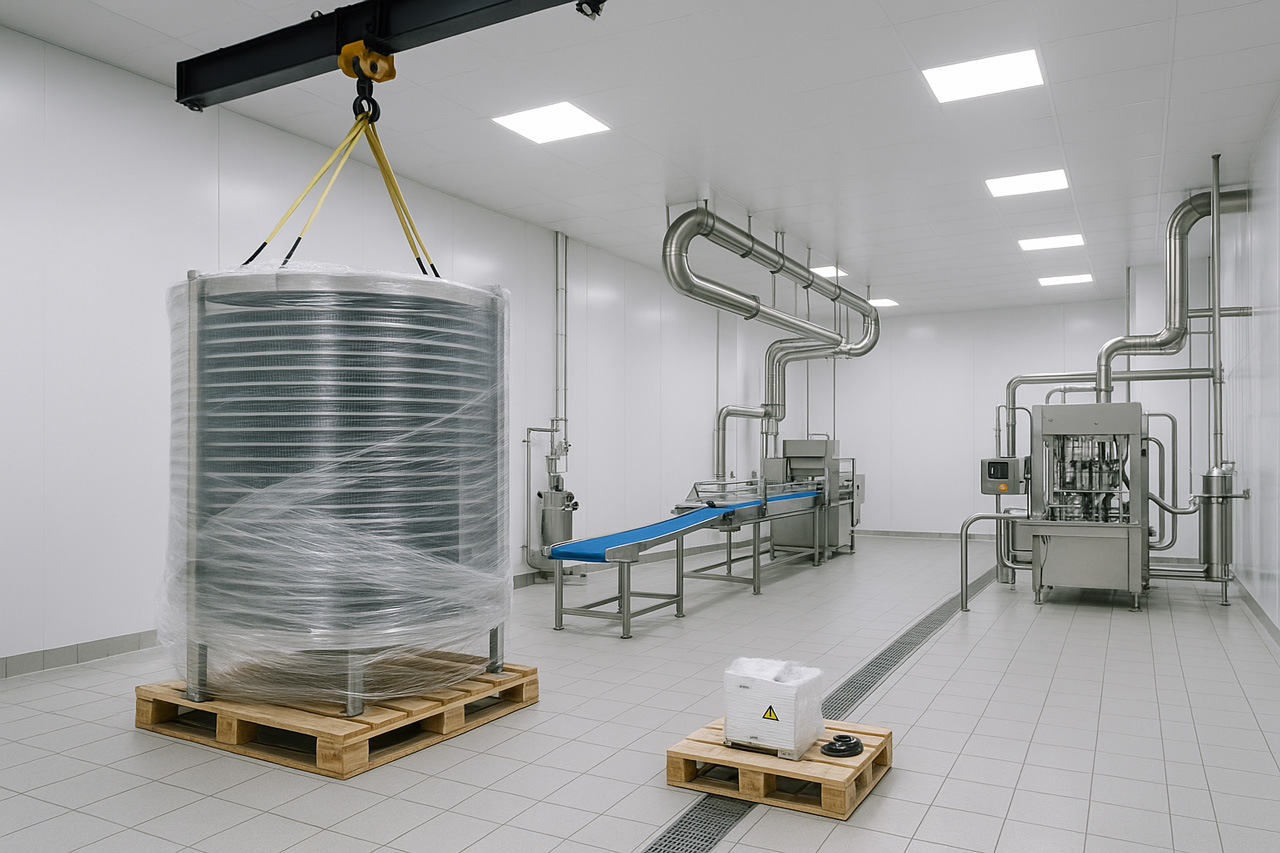COLD-CHAIN MOVERS, HOT-BUTTON RISKS
5 Hidden Mistakes That Derail Spiral Freezer & Servo Filler Relocations
When a food or beverage plant relocates or upgrades production lines, the cold-chain moves with it. Yet even experienced engineering teams can overlook details that send temperature-sensitive products—and compliance budgets—into a tailspin. Below are five frequent missteps RigX’s field audits uncover, plus practical fixes you can bake into the next freezer-or-filler move.
1. Skipping Nitrogen Blanketing on Spiral Freezers
The mistake. After defrosting a spiral freezer for rig-out, some crews leave coils and belts exposed to ambient air. Moisture quickly condenses, then flash-freezes the moment refrigeration kicks back on, coating evaporator fins in ice.
The fix. As soon as final swab tests clear, shroud the coil block in food-grade film and flood the cavity with dry nitrogen. Maintaining an oxygen level below 5 % stops frost from forming during transport and restart, preserving both airflow and energy efficiency.
2. Mis-aligning Drives and Take-Up Chains
The mistake. During reassembly, conveyors are leveled but not laser-aligned, forcing the spiral’s take-up chain to fight lateral load. Result: belt wander, premature link wear, and surprise downtime two weeks after commissioning.
The fix. Use a 0.01 mm-resolution laser alignment tool before tensioning. Document alignment scans in your turnover package so maintenance teams can verify drift at the first preventive check.
3. Ignoring Dew-Point Drift Inside the Hall
The mistake. Moving a freezer or filler means opening dock doors, raising humidity, and letting warm makeup air flood the room. When equipment chills back down, that moisture condenses on frames and drives—an open invitation for Listeria and rust.
The fix. Stage portable desiccant dehumidifiers to pull room dew point below 40 °F (4 °C) two hours before restart. Pair them with tack-mat stations to keep foot traffic from re-introducing moisture.
4. Treating Servo Fillers Like They’re Indestructible
The mistake. Pallets holding servo-driven piston or rotary fillers are often moved with no vibration monitoring. Yet even sub-G shocks can loosen encoder heads or hairline crack PCB solder joints, leading to weight-inaccurate fills that waste product.
The fix. Strap shock-loggers to each pallet and set alert thresholds at 0.4 G. If a spike occurs, QA can target inspections rather than delaying the entire line for blanket testing.
5. “We’ll Cool It Down Later” Re-Start Plans
The mistake. Assuming the system will reach spec temperature overnight. In reality, a spiral holding steady at 20 °F (-6 °C) before the move could take 24–36 hours to hit -10 °F (-23 °C) without a forced pull-down—putting HACCP logs out of tolerance.
The fix. Build a rapid re-cool protocol: pre-chill glycol, run evaporator fans at maximum CFM, and schedule empty-belt cycles until core sensors show target temp. Document the pull-down curve for your SQF or BRC audit trail.
Why These Details Matter
- Food safety. Condensation, mis-alignment, and unseen vibration all jeopardize product integrity—and your brand.
- Cold-chain integrity. Every minute outside spec shortens shelf life and invites bacterial growth.
- Compliance costs. Auditor findings that trace back to a move can balloon into repeat inspections and lost production days.
Bottom Line
Spiral freezer rigging and servo filler installation aren’t just heavy-lift challenges; they’re critical cold-chain events. By nitrogen-blanketing coils, laser-aligning drives, controlling humidity, logging vibration, and planning rapid re-cool, facilities can restart on schedule, keep HACCP records clean, and guard the bottom line.
Need a deeper checklist or a tailored move plan? Reach out—protecting cold-chain integrity is easier when the rigging strategy is built for food safety from day one.
Contact us
Please fill out the form below.


